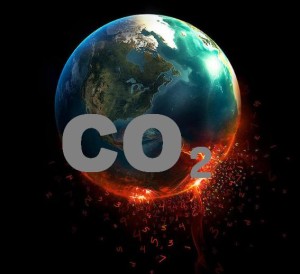Cement develops appetite for C02
LONDON, 1 December, 2016 − Three new studies illuminate the sheer complexity of the aspect of climate science known as the carbon cycle − how carbon dioxide gets into the atmosphere and out again.
Sometimes, human agency is at work, but nature takes care of it anyway – as one of the studies reveals in the case of cement, the world’s most widely-used building material.
Zhu Liu, postdoctoral scholar at California Institute of Technology’s Resnick Sustainability Institute, and colleagues report in Nature Geoscience that they took a close look at cement.
It is made by baking calcium carbonate (CaCO3) to make quicklime (CaO) −– a process called calcination – and releases CO2. This accounts for about 5 per cent of all human-produced carbon dioxide released into the atmosphere.
Making cement
But although climate scientists have always factored calcination into their calculations, they haven’t so far given a lot of thought to the reverse process − carbonation, in which cement, over the years, absorbs atmospheric carbon.
So the Caltech team considered what happens to different kinds of cement structures over a building’s lifetime, used computer models, and concluded that between 1930 and 2013, mortar and other materials sequestered 4.5 billion tonnes of CO2 from the atmosphere. That is about 43% of the greenhouse gas released in making the cement in the first place.
- Sometimes,nature’s agency dwarfs all human activity, but still has to be considered when calculating the human impact on the planet.
Humans release vast quantities of carbon dioxide by burning fossil fuels, but microbes and plant material in the soils probably release nine times as much CO2 in a process called natural respiration.
In the course of a year, all of this is reabsorbed in plant growth. But will global warming triggered by humans accelerate soil respiration, and thus make global warming even more dangerous?
Scientists report in the Proceedings of the National Academy of Sciences that they looked at 27 studies from nine biomes – ecosystems ranging from desert to the Arctic tundra – to make sense of the soil response on a planetary scale.
“Because there is so much carbon stored in frozen
soils of the Arctic, this has really serious
repercussions for future climate change”
“Consistently, across all biomes, we found that soil respiration increased with soil temperature up to about 25°C,” says Joanna Carey, a biologist at the Marine Biological Laboratory in Woods Hole, Massachusetts, who led the study.
“That means the Arctic latitudes, where soil temperatures rarely if ever reach 25°C, will continue to be the most responsive to global warming. Because there is so much carbon stored in frozen soils of the Arctic, this has really serious repercussions for future climate change.”
- Sometimes, carbon dioxide levels may also respond to the choices humans make – as illustrated by scientists in the US, who considered the impact upon climate of a global ban on genetically modified (GM) crops.
Politically contentious
In Europe and parts of Asia, GM crops are politically contentious. But in the US, they are big business, as crops are engineered to save on pesticides and fertiliser use.
The researchers report in the Journal of Environmental Protection that replacement of genetically modified organisms (GMOs) by conventionally-bred varieties of cotton, corn and soybeans would mean that food prices would rise from between 0.27% and 2.2%, depending on the region, and would result in an increase in global cropland of 3.1 million hectares
This conversion of vast areas of pasture and forest to farmland would then add 0.92 billion tonnes of carbon dioxide to the atmosphere.
“Some of the same groups that want to reduce greenhouse gas emissions also want to ban GMOs, but you can’t have it both ways,” says Wally Tyner, a professor of agricultural economics at Purdue University in Indiana, and one of the authors of the report.
“Planting GMO crops is an effective way for agriculture to lower its carbon footprint.” – Climate News Network




